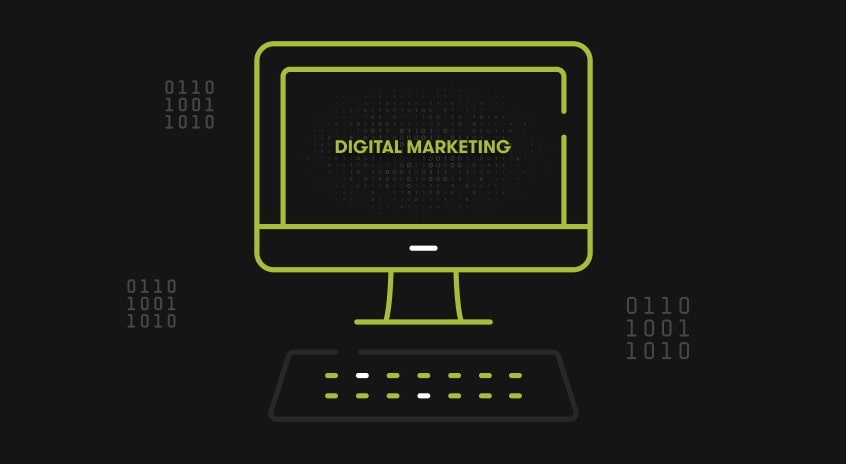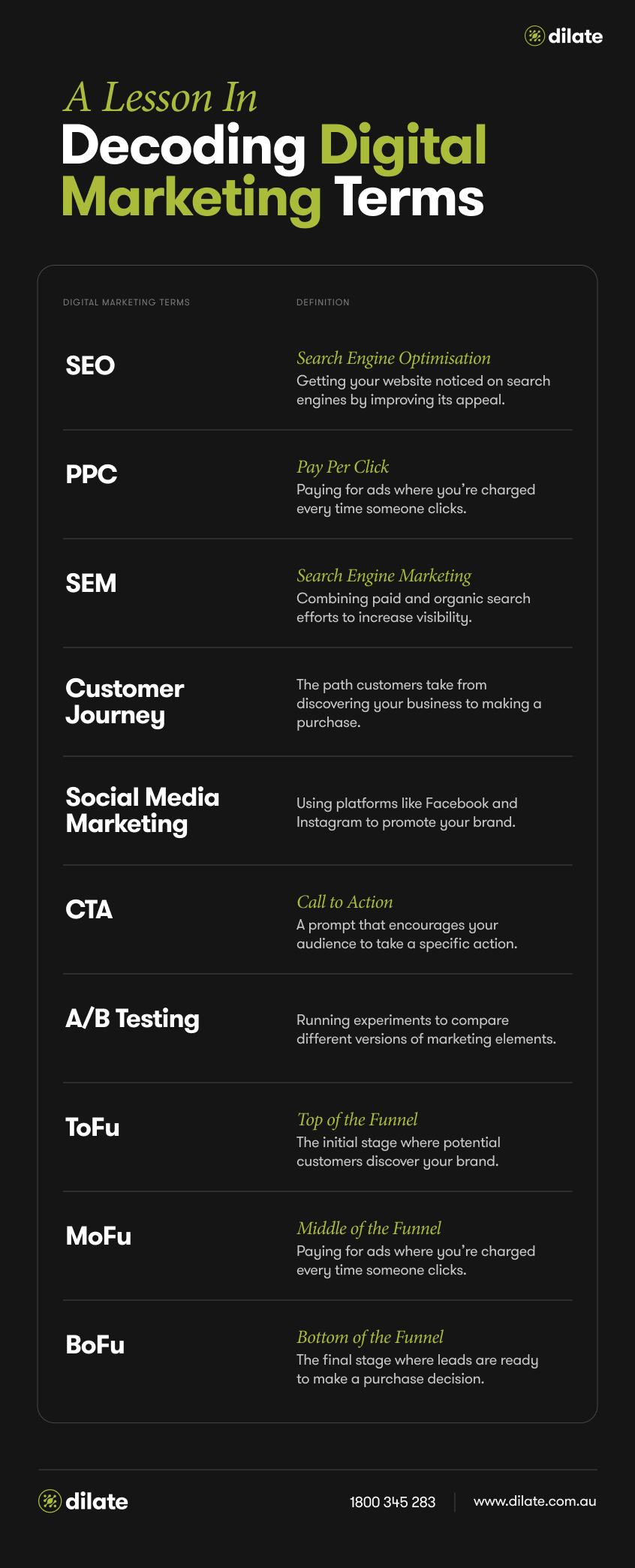


Digital marketing can be overwhelming, especially for newcomers. There’s a bajillion new terms and acronyms, and it's easy to feel lost. So let me break down some of the most common digital marketing jargon, so it’s a little easier for you to navigate the digital world.

Want to know if your digital marketing is working? You’re going to need to keep an eye on some important numbers.

These metrics will help you measure the effectiveness of your campaigns:
While these metrics are essential, consider tracking additional KPIs based on your specific goals. For example:
By monitoring these key performance indicators, you can make data-driven decisions to improve your digital marketing campaigns.
Let's face it, everyone makes mistakes, and digital marketing is no exception. One of the biggest blunders is jumping on the latest shiny object without a clear plan. Just because everyone else is doing TikTok doesn't mean it's right for your business. It's crucial to understand your target audience and where they hang out online.
Another biggie is blasting out the same message everywhere. People use different social platforms for different reasons. What works on Instagram might fall flat on LinkedIn. You need to tailor your content to each platform to truly connect with your audience.
And don’t get me started on ignoring mobile optimisation. With more people than ever using smartphones, your website needs to look and work great on small screens. A slow or clunky mobile site can drive customers away.
Lastly, forgetting to measure your results is like driving without a GPS. You need to track key metrics to see what's working and what's not. Don't just spend money on ads or social media without knowing if it's actually bringing in customers.
Optimisation isn't just about tweaking numbers; it's about making your digital efforts really work. It's like fine-tuning a car engine – you want it to run smoothly and efficiently.
When you optimise, you're making sure every dollar you spend on ads or marketing gives you the biggest bang for your buck. Plus, it makes your website easier for people to use, which keeps them coming back for more.
And let's face it, the online world is super competitive. To stay ahead, you need to keep improving. Optimisation helps you do that by showing you what's working and what's not.
Basically, optimisation is about growing your business and making sure you're getting the best results possible from your digital efforts.

The digital landscape is like a fast-moving river; if you stand still, you'll get swept away. New platforms, algorithms, and consumer behaviours emerge all the time. Even at Dilate, we’re always investing in not just keeping up, but setting the pace.
Think of it as investing in yourself. Every new skill or piece of knowledge is an asset that can pay off big time. Plus, learning new things keeps your job interesting and challenging. It's easy to get stuck in a rut, but staying curious helps you discover fresh perspectives and innovative solutions.
Remember, digital marketing isn't just about technology; it's about understanding people. By staying informed about the latest trends, you can better connect with your audience and build stronger relationships.
Understanding digital marketing terms is a great start, but we know it’s just the beginning. At Dilate Digital, we're passionate about helping businesses navigate the complex world of digital marketing. The digital landscape is always changing, but we believe in the power of continuous learning and innovation.
Armed with this newfound knowledge, you're well-equipped to tackle your digital marketing goals. But if you're feeling overwhelmed, don't worry – we've got your back. Our team of experts can provide the guidance and support you need to succeed. Together, we can create effective campaigns that connect with your audience and drive results.

what our clients are saying
create business. better everyday.
Let's Talklearn from the best minds in the business
Bodie provides some insight into Dilate's internal operations. How we approach what we do, and how we strive to be Better Everyday.






5. Social media marketing
Social media is where you hang out with your customers online. You can share what your business is about, tell your brand's story, and get people excited about what you offer. Places like Facebook, Instagram, and LinkedIn are great for connecting with people and driving them to your website.
Some social media marketing tips: